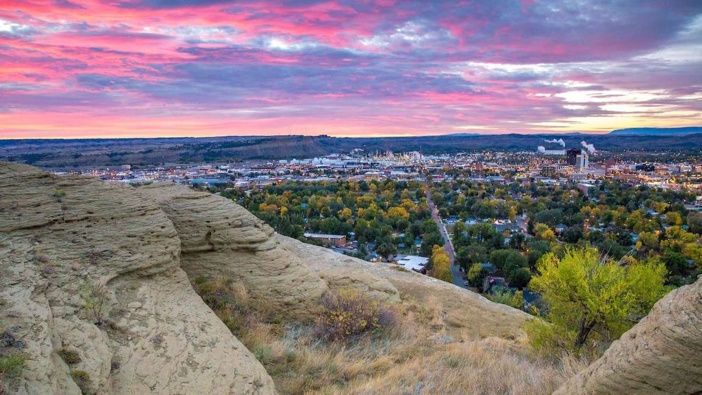Southern Montana is the Wild West of dreams and the Hollywood big screen, sprawling over a rugged and serene landscape. After taking in the manifold treats of Wyoming, a dabble with Montana’s big-skies and rock-star good looks is an essential addition to an American West road-trip. Part rough-and-tumble Rocky Mountains and part expansive prairie, the state doesn’t boast any major cities – they are more like overgrown cow towns.
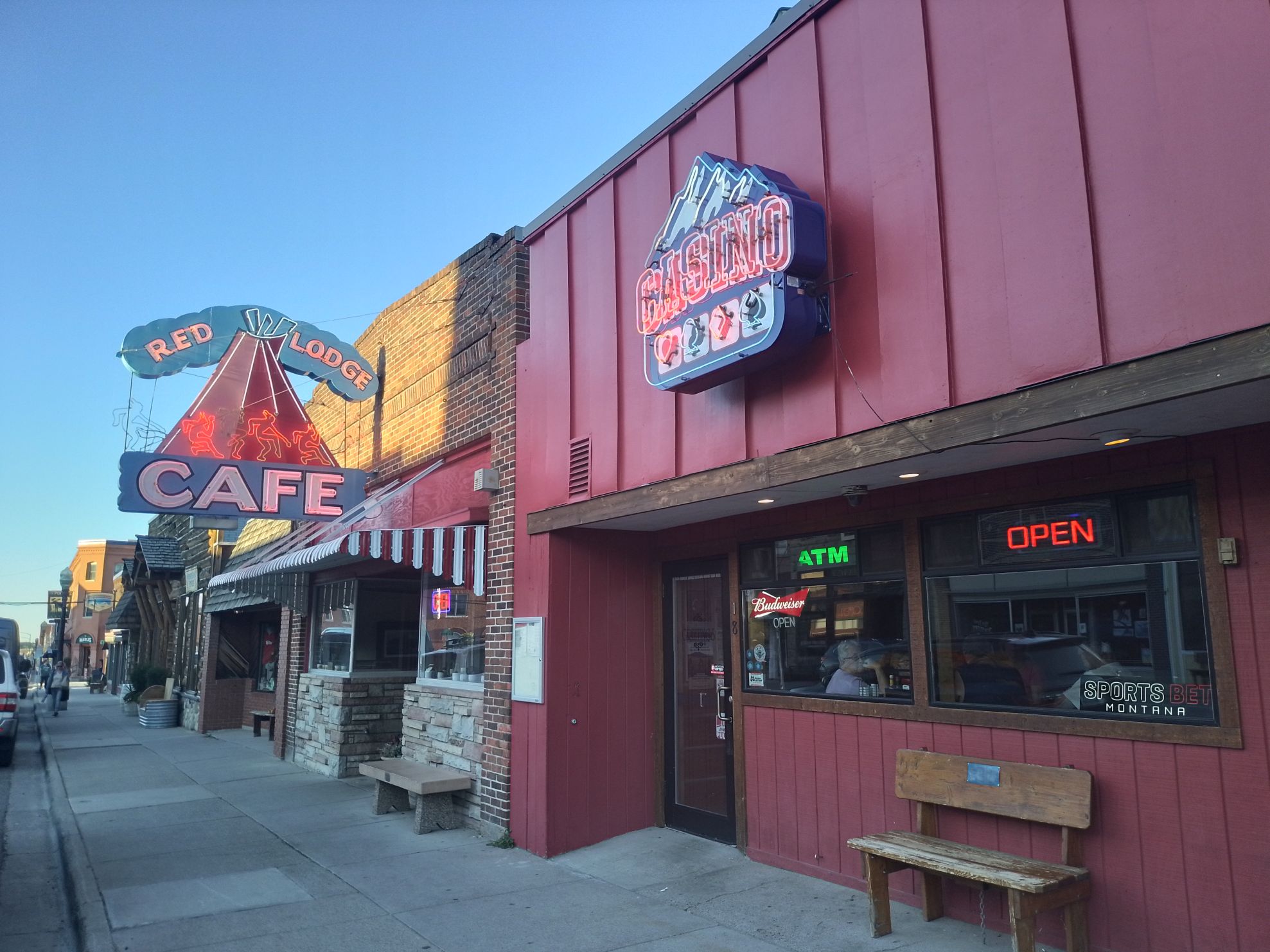 Main Street Red Lodge: Credit Mike Yardley
Main Street Red Lodge: Credit Mike Yardley
But if you’re in need of an urban fix, your best bet is Billings, the state’s most populous city – about the size of Hamilton. Nicknamed the Magic City, the moniker came about from Billings’ expansive growth in the golden age of railroads, steamboats and cattle barons. The city is a springboard for historical explorations and outdoorsy adventure. First impressions count and what captured my attention on arrival in Billings is how the city is dramatically cradled by magnificent sandstone cliffs known as the Rimrocks. Deposited by an ancient inland seaway and slowly carved over millions of years by the Yellowstone River, these scenic "rimrocks" backdrop the northern edge of town.
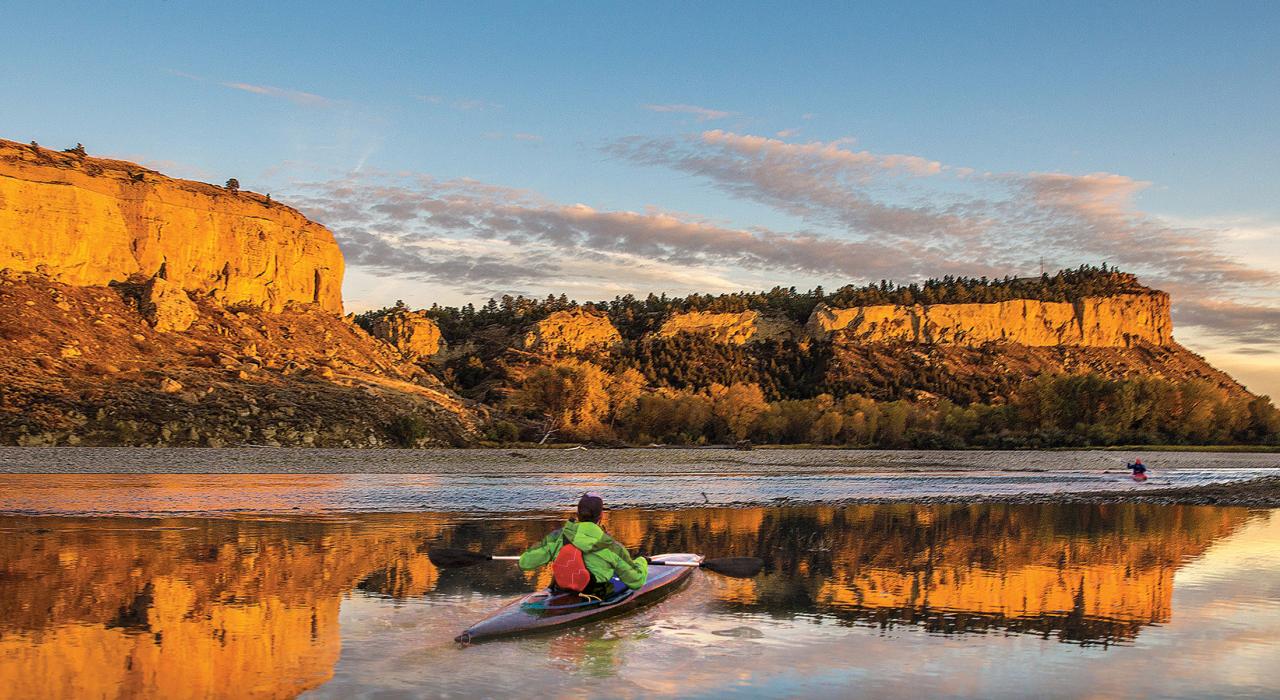 Rim Rock by Kayak, Billings. Photo / Supplied
Rim Rock by Kayak, Billings. Photo / Supplied
I struck out on the trails at Swords Park which offers enormous views from the rimrocks. Just keep an eye out for the rattlesnakes! Zimmerman Park and Phipps Park offer fabulous walking trails too, while if you’d rather take to the water to admire the rimrocks, hire a kayak for a dreamy float at sunset on the Yellowstone River. Immerse yourself in nature’s splendour! History also adorns Pompeys Pillar, a striking sandstone monolith just of town. It’s where William Clark carved his name into the stone in July 1806 before continuing his famous expedition west with Meriwether Lewis.
If you’re up for a culture fix, there’s a good clutch of museums in Billings. I particularly enjoyed the Western Heritage Center, housed in the city’s old library, proudly preserving the stories and history of the Yellowstone River Valley and Northern High Plains. Don’t let the city’s brightly illuminated, flame-throwing oil refineries symbolise your sense of nightlife in Billings. Bar-hopping the craft breweries is where the city excels, come nightfall.
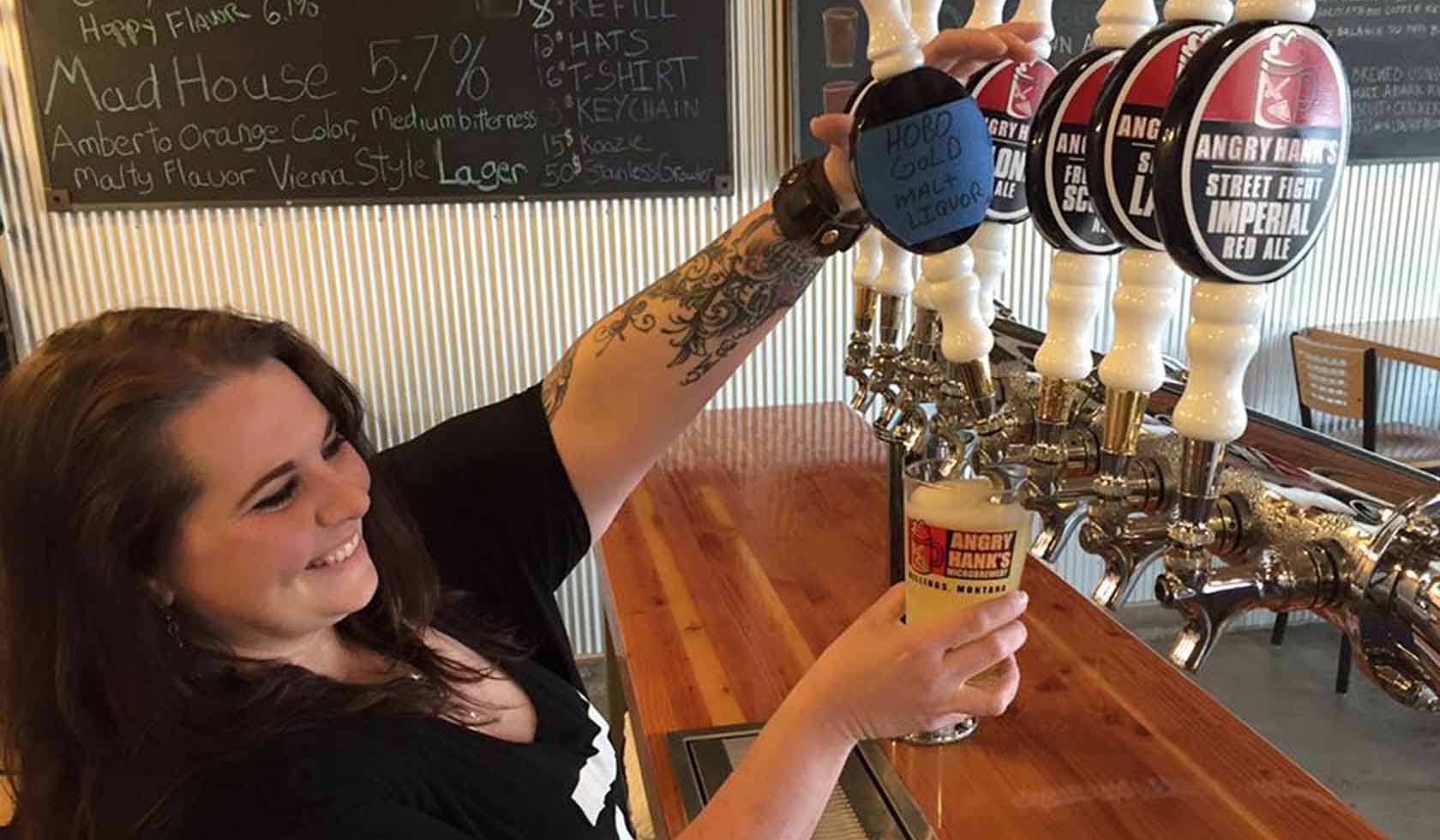 Angry Hanks Brewing. Photo / Supplied
Angry Hanks Brewing. Photo / Supplied
Clustered in the downtown district, hop-scotch your way from Angry Hanks and Thirsty Street Brewing Company to Uberbrew and Montana Brewing Company. Right next door on Montana Ave, Hooligan’s Sports Bar will top off your all-American night out on the town. Montana Ave, which has been transformed into a very hip strip of hospitality, parallels the railroad that gave the city life in the 19th century.
For the kids and kids at heart, the only thing better than a binge at the Caramel Cookie Waffles bakery is to get your fill at the gourmet ice cream store, Big Dipper. In the blazing Montana sunshine, this place is like a refuge! I highly recommend a scoop of Banana Cream Pie and tangerine sorbet. A block away, The Burger Dive dishes up creations like I’m Your Huckleberry burgers, which have been honoured by the World Food Championships. Their garlic-drenched fries will linger long in your memories – if not on your breath.
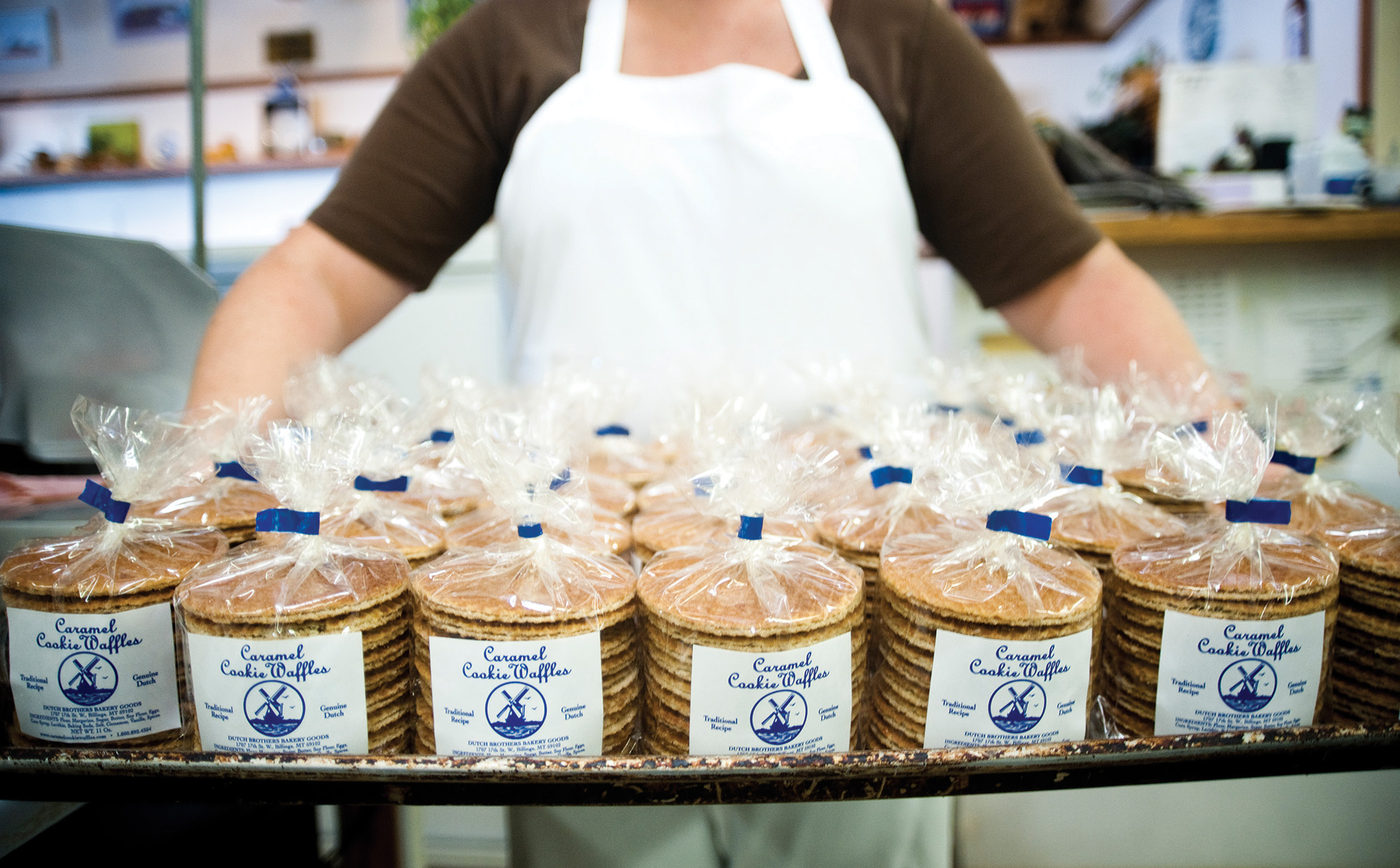 Caramel Cookie Waffles, Billings. Photo / Supplied
Caramel Cookie Waffles, Billings. Photo / Supplied
But it’s that angus burger topped with smooth goat cheese, bacon, a fresh cut onion ring and huckleberry and chili barbeque sauce, that really hit the spot. Few tastes carry such revered status as the huckleberry does in the American West. They grow wild across Montana, resembling large dark blueberries and Native Americans still use them as a traditional medicine – packed with antioxidants. They certainly taste great in a burger!
Where to stay? In the heart of town, the Northern Hotel is the grand dame, first built in 1940, but extensively refreshed a decade ago. You’ll enjoy swish accommodations with all of the creature comforts, plus the on-site dining is superb. Enjoy a classic but upscale breakfast at Bernie’s Diner.
To the west of Billings, Red Lodge is a small-town gem that will charm your pants off, edging the Yellowstone River. This sweet little town is nestled in the foothills of the Beartooth Mountains and lassoed by Custer National Forest. The main street, flanked by evocative old stone buildings, brims with enticements, from western-wear stores and antique shops to art galleries and great hospo options. You’ll love the gift store, Montana CC Legends, which is loaded with trinkets, treasures and impressive local art. Sweet-tooths must not miss one of the best confectionary stores I have seen in a long time – Montana Candy Emporium. Think the Remarkables Sweet Shop on a gigantic scale. This Red Lodge institution has been a mainstay for decades, housed in a nostalgic building, overspilling with nostalgic candy.
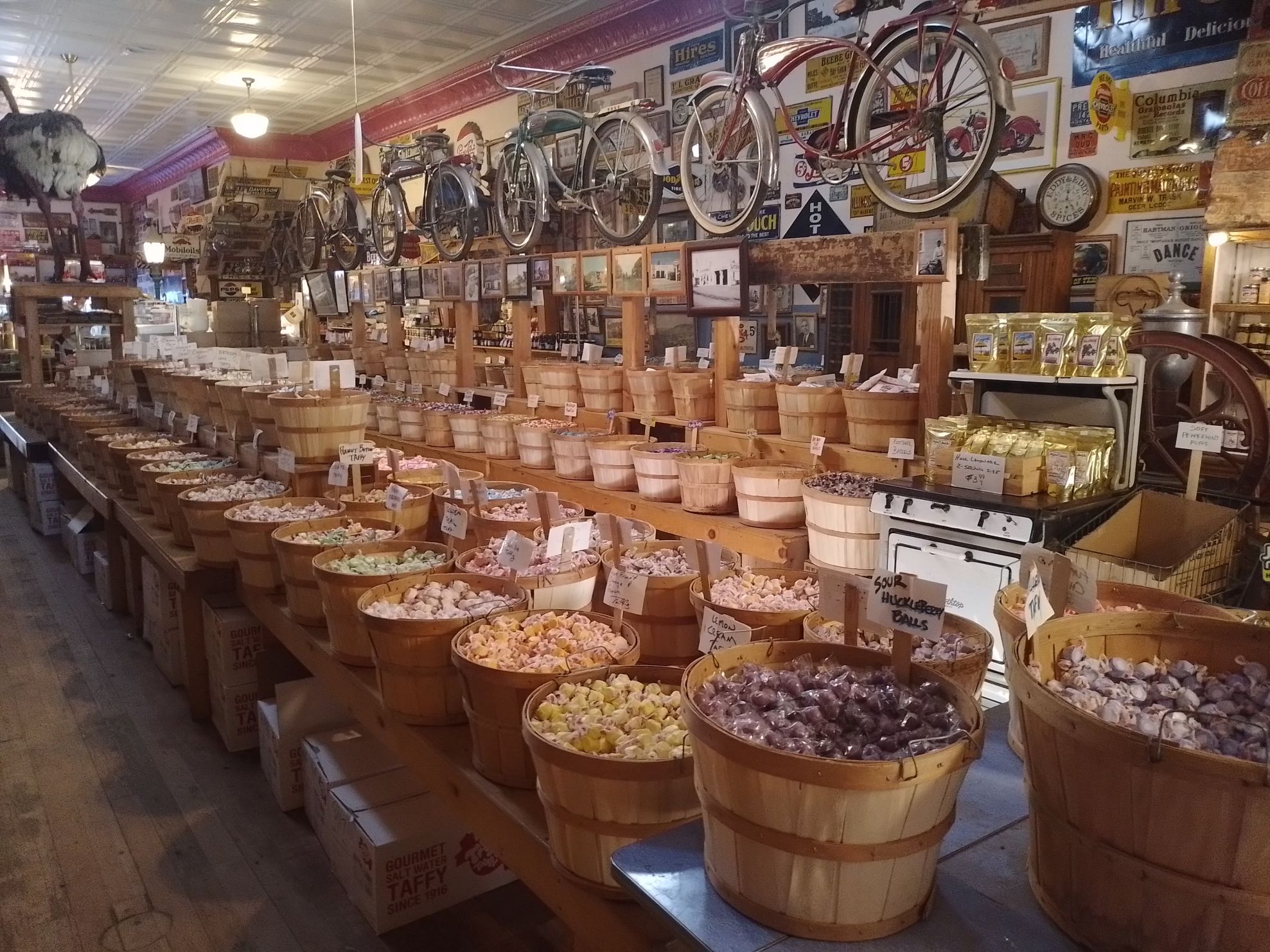 Montana Candy Emporium. Credit Mike Yardley
Montana Candy Emporium. Credit Mike Yardley
The handmade chocolate treats at the counter are sinfully good, but being in Montana, it would be rude not to stock up on huckleberry candy. I loaded up on gob fills of huckleberry sour balls for road-trip sustenance. Relax in the garden at Red Lodge Ales, share a massive margarita and pizza with at Bogart’s, grab a burger at Red Box Car or wind down with a steak and whiskey cocktail at The Pollard Hotel. Red Lodge is the quintessential place where you’ll just want to kick-back, to shop, nosh and linger.
Just out of town, treat yourself to an exhilarating drive on the Beartooth Highway, a 64-mile stretch of U.S. 212 from Red Lodge to Cooke City. Dubbed the most beautiful roadway in America, this jaw-dropping drive climbs to an astounding 11,000 feet above sea level. That’s nearly as high as the summit of Aoraki/Mt. Cook. Completed nearly 90 years ago, its stature as a bucket-list drive has not dimmed – and it certainly lives up to its hype as the ultimate high-country route.
Heading out of Red Lodge, I felt transported to Heidi’s Switzerland, with lodgepole pine forests and lush meadows rolling down to meet the road. Before long, the ascent became stark and dramatic, thrusting you up higher and higher into the grip of the Beartooth Mountains. The sprawling range features 20 peaks higher than Aoraki. Mile upon mile of switchbacks serves up epic views across the sweeping snow-clad tundra and bejewelled glacial tarns of the Hellroaring and Silver Run plateaus. You end being higher on that highway, than the snow line on the plateaus, across the valley.
At Vista Point, the plummeting views staring down into the jaws of the Rock Creek canyon is another highlight. Just pass the highway summit, the “Bear’s Tooth” comes into view – a narrow pyramidal spire of rock, carved by glaciation, that became the namesake of the Beartooth Mountains. It’s a cranking drive, if not a little vertigo-inducing! (Beartooth Highway is only open from about May to mid-October, depending on snow. They’ve had some late, unseasonal snow dumps in June and even July, in recent years, so check ahead that the road is open.)
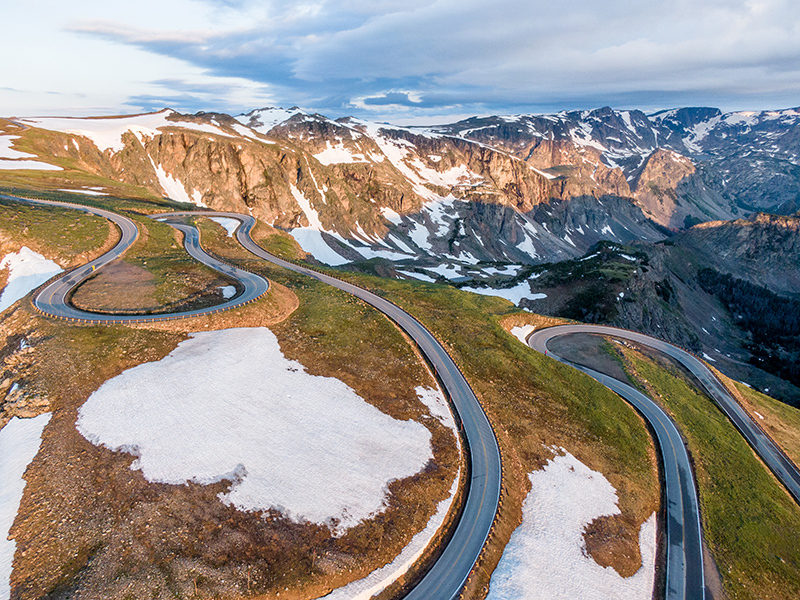 Beartooth Highway. Photo / Yellowstone Country Montana
Beartooth Highway. Photo / Yellowstone Country Montana
To the left of Billings, the plains of eastern Montana stretch out like a pancake, offering a more subtle beauty than the gnarly mountains to the west. A land of rolling hills, dusty bluffs and badlands, and the occasional rock-walled canyon, this is classic cattle and wheat country. Temperatures can be extreme; hot in the summer under a blazing sun, and brutally cold in the winter. Just over an hour southeast of Billings, I drove to Little Bighorn Valley. A sequence of low-slung hills rises above the valley - it is sacred ground because it’s where the Battle of the Little Bighorn took place in 1876, between the US Army and Great Plains Indians. As many as 2,000 Lakota and Cheyenne warriors encircled and routed the US Army, in ferocious defence of their ancestral way of life.
Perhaps there is no phrase in the English language that serves as a better metaphor for an untimely demise than "Custer's Last Stand." It was on the Little Bighorn battlefield, 800 acres of dry sloping prairies, that George Armstrong Custer and the soldiers of the 7th US Cavalry Regiment met their end.
The Little Bighorn Battlefield National Monument chronicles the history of this world-famous engagement, offering a coherent look at how the battle developed, where the members of Custer's contingent died on Last Stand Hill, and how it might have looked to the swarming warriors. It’s very easy to traverse the 7km-long battlefield, driving along the ridgelines, to all of key sites.
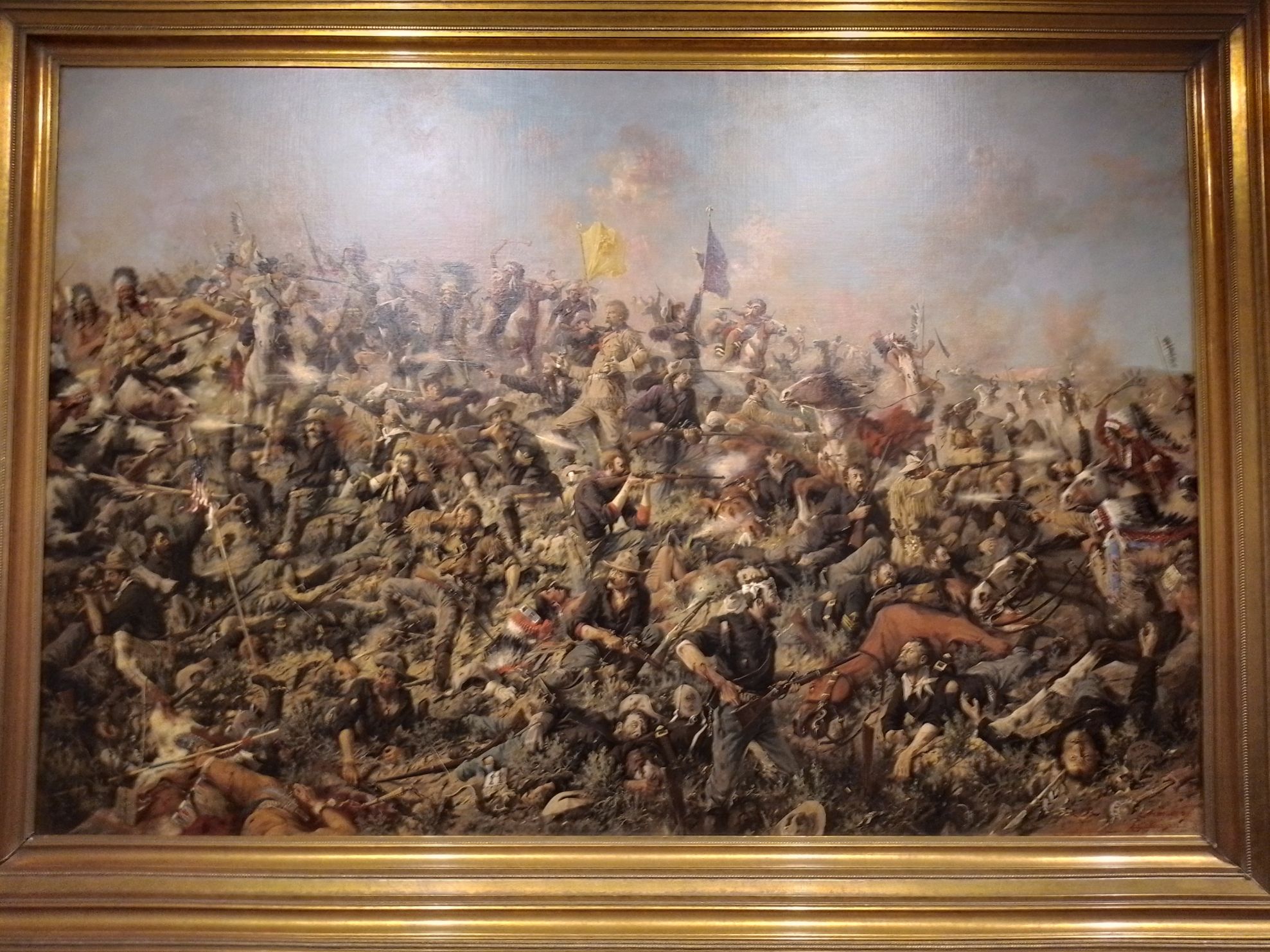 Last Stand Hill at little Big Horn: Credit: Mike Yardley
Last Stand Hill at little Big Horn: Credit: Mike Yardley
The fight was an overwhelming victory for the Plains Indians, who were led by several major war leaders, including Crazy Horse and Chief Gall and had been inspired by the visions of Sitting Bull. They may have won the battle, but ultimately lost the war. Custer's death galvanised the military. In subsequent months, they tracked down Sioux and Cheyenne warriors and forced them onto reservations in North and South Dakota, ending their independent, nomadic way of life. Within a few short years they were all confined to reservations.
Custer's remains were eventually reburied at the US Military Academy at West Point in 1877. Below the battlefield, the adjacent National Cemetery was established in 1879, and it incorporates a self-guided tour to some of the more significant figures buried there. It’s an indelible encounter with the American story. www.greatamericanwest.co.nz
Mike Yardley is our resident traveller on Jack Tame Saturday Mornings.
LISTEN ABOVE
Take your Radio, Podcasts and Music with you

